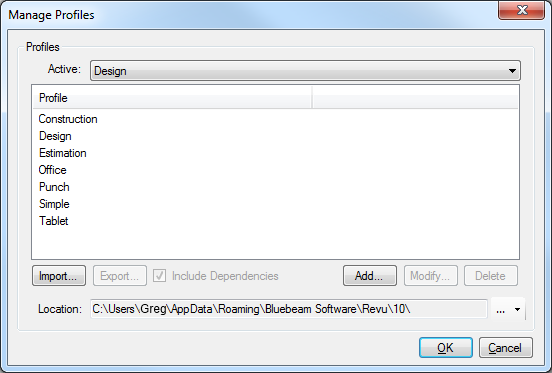Revu comes preloaded with several Profiles that are geared toward specific jobs and functions, including:
Advanced: For users who need a broad range of advanced markup features and precise control over markups and measurements and their properties.
Construction: For construction professionals who work with large drawing sets and smart documents and need robust markup, editing, and collaboration tools.
Design Review: For users who need in interface tailored for design review and collaboration with customizable tool sets that contain essential features for drawing navigation, markup and measurement.
Office: For users who review and proofread documents and need the most frequently used markup and editing tools with a simplified interface.
Oil & Gas: For users working with piping & instrumental designs (P&IDs) and process flow diagrams (PFDs) who need specialized tool sets geared toward those tasks.
Punch: For users completing a punch process.
Simple: For users who need to maximize screen space for viewing PDFs but also want to access the Command bar and document tabs for quick navigation between files.
Tablet: For tablet PC user, this Profile reorients the interface vertically and exposes only key markup and editing tools to maximize screen space while panning, zooming, writing and drawing with a tablet PC stylus.
Takeoff: For estimators and specifiers who need to view plans and specs, conduct quantity takeoffs or add markups to their PDF files.
 Profiles button from
Profiles button from 
 button to the right of the field to browse to the centralized location. Any new or modified profiles stored in this location will be immediately available. They cannot, however, be permanently modified by individual users: any changes a user makes to a shared profile only affect that user and are lost when
button to the right of the field to browse to the centralized location. Any new or modified profiles stored in this location will be immediately available. They cannot, however, be permanently modified by individual users: any changes a user makes to a shared profile only affect that user and are lost when